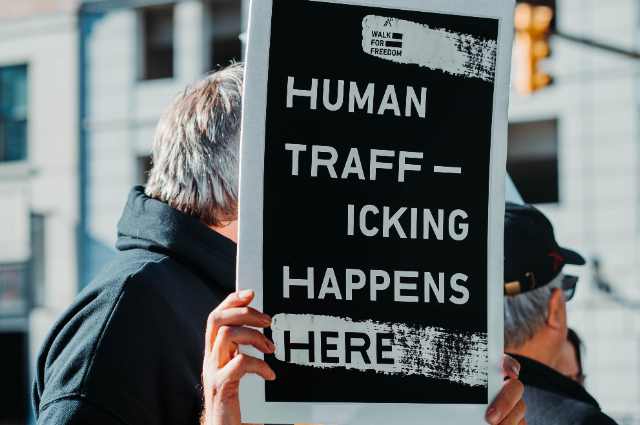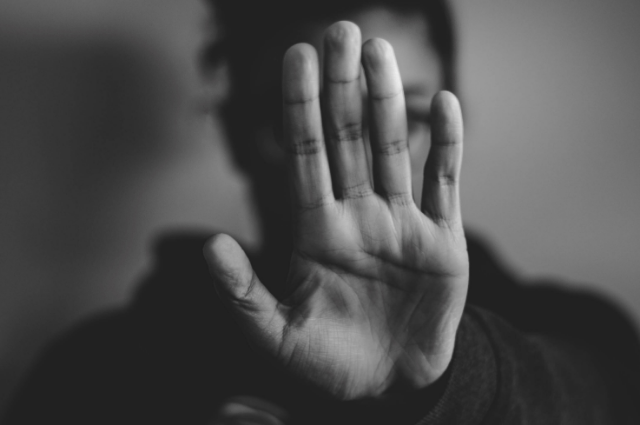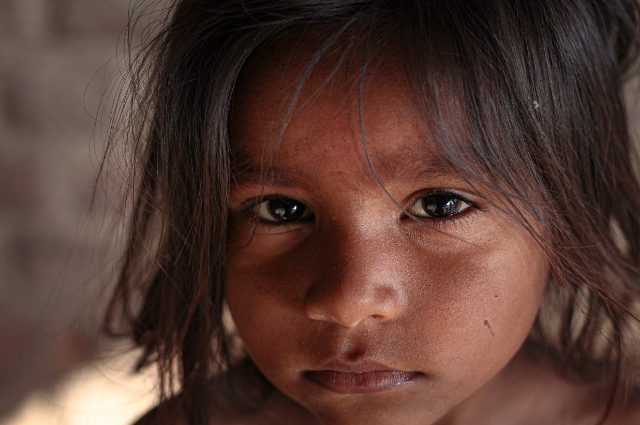
Photo by Hermes Rivera on Unsplash
"In a chilling revelation, the arrest of two doctors in Budaun, Uttar Pradesh, has sent shockwaves through the district. Dr. Md. Arif and Dr. Md. Owais were apprehended on charges of removing the eyes of a young woman during a post-mortem procedure."
ORGAN TRAFFICKING
The World Health Organization (WHO) estimates that more than 10,000 black market operations involving harvested organs occur annually, representing just the tip of this nefarious iceberg. However, the enormity of this issue lies beyond mere statistics. It's etched in the stories of the marginalized, the destitute, and the powerless—those coerced into parting with their organs for financial gain or under duress.
While the precise numbers remain elusive due to the clandestine nature of these transactions, it's evident that organ trafficking knows no borders. It's a clandestine industry thriving across continents, taking advantage of regulatory gaps and the desperation of individuals grappling with poverty, unequal access to healthcare, and a dearth of legitimate organ donation avenues.
From impoverished communities in developing nations to affluent societies seeking quick-fix solutions for organ scarcity, the demand-supply chain fuels this gruesome trade. The stark reality underscores the urgency to shed light on this issue, not just as a medical crisis but as a profound violation of human rights and dignity.
As nations grapple with regulatory loopholes and enforcement challenges, the need for a collective, global response looms larger than ever.
Organ trafficking isn't just a statistic; it's a moral battleground demanding a unified front against its insidious grasp on human lives.
TYPES OF ORGANS TRAFFICKED
- Kidneys, often referred to as the "currency" of the organ trade, top the list of trafficked organs due to their regenerative nature and the possibility of donation by a living person.
- The liver, another resilient organ, follows closely behind. Both kidneys and livers are in high demand due to the growing number of patients awaiting transplants globally.
- The heart, though more challenging to procure and transport due to time constraints, commands an unparalleled value in this gruesome market. Its scarcity intensifies the demand, making it a lucrative target for traffickers.
- Even the corneas, delicate and vital for vision, are not spared from this macabre business. Their relatively easier extraction and preservation add to their appeal, fetching considerable prices in the clandestine market.

The staggering demand for these organs stems from the shortage of legal organ donations, pushing desperate individuals into the clutches of organ traffickers. The monetary value attached to these organs makes them a prime target for exploitation, often leaving vulnerable individuals susceptible to coercion, deceit, and exploitation.
METHODS AND ROUTES
- Black Market Networks: Organ trafficking operates within intricate black market networks that span across countries and continents. These networks often involve a chain of middlemen, brokers, and facilitators who connect buyers with potential sellers.
- Coercion and Exploitation: Vulnerable populations, including impoverished individuals, refugees, and marginalized communities, are often targeted by traffickers. They're coerced or deceived into selling their organs, exploiting their dire circumstances for financial gain.
- Underground Clinics and Facilities: Procedures to extract organs may take place in underground clinics or makeshift facilities where medical standards are compromised. These locations operate clandestinely to avoid detection by authorities.
- Deceptive Practices: Traffickers employ various deceptive practices, promising large sums of money or false medical assurances to entice individuals into selling their organs. Victims are often misled about the risks and consequences of the procedures.
- Online Platforms and Facilitation: The digital realm serves as a platform for traffickers to connect with potential buyers and sellers. Online forums, social media, and secretive websites facilitate communication and transactions, making it challenging for law enforcement to track these activities.
- Cross-border Transport: Organs are transported across borders, often through illicit channels, utilizing forged documents or exploiting loopholes in customs and immigration systems. Smuggling routes and methods constantly evolve to evade detection.
- Corruption and Bribery: Corruption within certain institutions or among officials contributes to the smooth operation of organ trafficking. Bribes are exchanged to facilitate the movement of organs and to avoid legal scrutiny.
THE ENTIRE CASE:
The incident stemmed from the tragic death of 20-year-old Puja, whose body was discovered hanging at her in-laws' residence in Rasula village. Initially deemed a suicide, Puja's family alleged foul play, pointing fingers at a possible murder motivated by dowry demands.
The investigation took a grim turn when Puja's family received her body after the post-mortem, only to find her eyes missing. The family accused the doctors involved in the autopsy of this ghastly act. Authorities, taking cognizance of these allegations, ordered a second post-mortem, confirming the absence of the eyes. Puja's brother, Rajkumar, lodged a formal complaint leading to an FIR against the doctors under sections of the Indian Penal Code and the Transplantation of Human Organs and Tissues Act.
Dr. Md. Arif and Dr. Md. Owais were swiftly taken into custody after initial investigations pointed toward their involvement. Presenting the case before Chief Judicial Magistrate Mohammad Sajid, the authorities secured their imprisonment. However, suspicions extend beyond these two doctors, with indications of possible involvement of additional staff members during the post-mortem. Authorities have hinted at further arrests pending a comprehensive inquiry.
Meanwhile, a dedicated team, headed by Additional District Magistrate V K Singh, submitted its findings to District Magistrate Manoj Kumar. The unsettling report, submitted on Wednesday, underscores the gravity of the situation. As the investigation delves deeper, the community waits in anticipation for justice to prevail amidst this harrowing and disturbing turn of events.
VICTIMS AND VULNERABLE GROUPS

- Marginalized Communities: Organ trafficking predominantly preys on the marginalized, including impoverished individuals lacking access to healthcare. Their vulnerability becomes a breeding ground for exploitation, pushing them into the grim trade of selling organs for survival.
- Refugees and Displaced Persons: Refugees, already grappling with displacement and instability, often fall victim to organ trafficking networks. Desperation for financial stability coupled with their precarious circumstances makes them easy targets for exploitation.
- Minority Groups: Certain minority communities, facing societal discrimination and limited opportunities, find themselves disproportionately affected by organ trafficking. The lack of legal protection and social support exacerbates their vulnerability to coercion or manipulation.
- Elderly and Uneducated Individuals: The elderly, often grappling with financial constraints and health issues, can be coerced into selling their organs. Additionally, individuals with limited education may not fully comprehend the repercussions of such transactions, making them susceptible to exploitation.
ROLE OF ORGANIZED CRIME
Global Networks, Local Impact:
- Organized crime syndicates have expanded their reach, creating intricate networks that span continents, exploiting loopholes in international law enforcement to traffic organs across borders.
- These networks capitalize on the high demand for organs, leveraging their cross-border operations to cater to both affluent recipients and desperate sellers.
Sophisticated Operations:
- Organized crime groups employ sophisticated tactics, utilizing a blend of technology, coercion, and a network of intermediaries to facilitate the illicit trade.
- They infiltrate vulnerable communities, preying on individuals in dire circumstances, and coercing them into selling their organs through deceit or force.
Transnational Trafficking Routes:
- Trafficking routes transcend geographical boundaries, utilizing clandestine channels and corrupt officials to transport organs swiftly and discreetly.
- Often operating in collusion with corrupt elements within healthcare systems, these networks manipulate medical facilities to facilitate illegal surgeries and transplants.
Profits and Expansion:
- The lucrative nature of organ trafficking fuels the expansion of criminal networks, with profits rivaling those of drug and arms trafficking.
- As regulations tighten in certain regions, these networks adapt, shifting their operations to areas with weaker legal frameworks, further complicating efforts to dismantle their operations.
Cross-Sectoral Collaboration:
- Collaboration between law enforcement agencies, international organizations, and healthcare institutions is crucial to combatting organized crime in organ trafficking.
- Efforts to disrupt these networks require coordinated action at both national and international levels, involving intelligence sharing and targeted operations.

Human trafficking is modern-day slavery, and it is happening in our own communities. It touches every corner of the world, which is why we must join together to confront this violation of human rights. - Barack Obama
This quote encapsulates the pervasive nature of human trafficking, likening it to modern-day slavery that persists worldwide. The term "modern-day slavery" draws attention to the fact that despite historical efforts to abolish slavery, this heinous practice still exists in various forms today.
The phrase "Happening in our own communities" emphasizes the proximity of this issue - it's not confined to distant lands but occurs within local environments, affecting individuals within our society. This highlights the urgency of addressing human trafficking, as it's not a problem limited to specific regions but a global concern that requires collective action.
The call to "Join together to confront this violation of human rights" underscores the necessity for a unified, collaborative effort to combat human trafficking. It stresses the importance of international cooperation, community involvement, government initiatives, and law enforcement actions to tackle this grave violation of human rights.
This quote serves as a poignant reminder of the widespread and urgent nature of human trafficking while emphasizing the need for concerted efforts to combat this injustice on a global scale.
